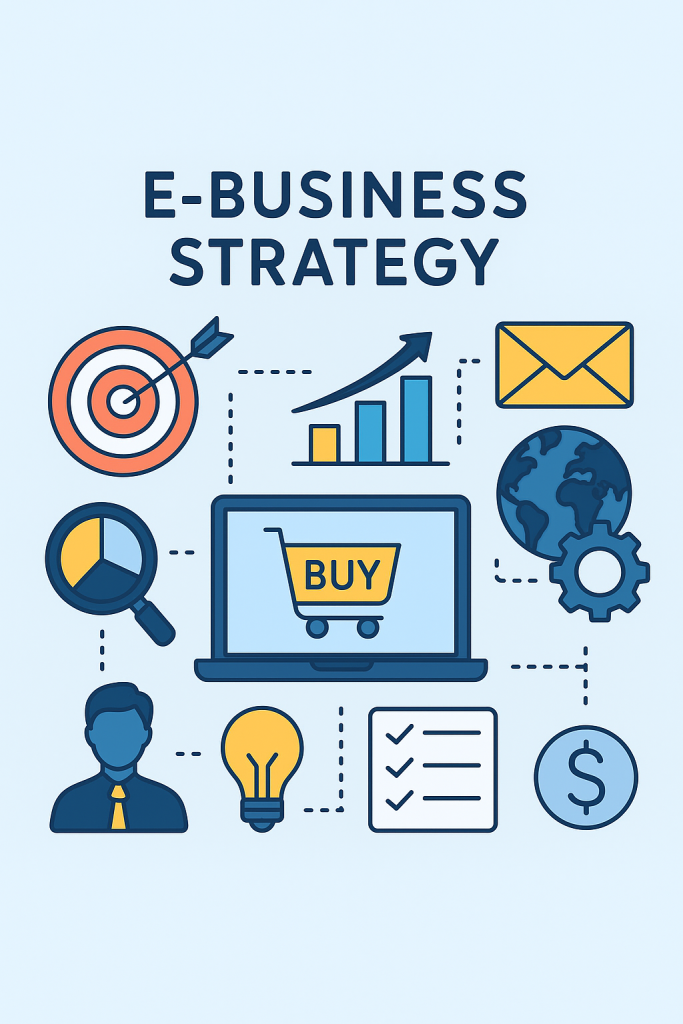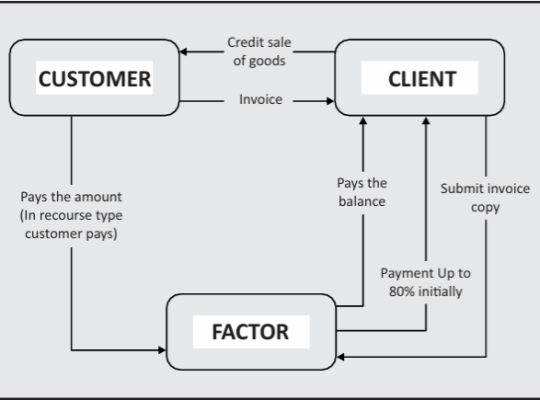
Overview of E-Business Strategy
An e -business strategy is an approach which gives a business a long-term direction which it should use in utilizing digital technology in balancing relations with its internal and external partners. This involves communication through intranet with internal stake holders and the internet with customers, suppliers and other partners.
Key Points:
The e-business strategy does not only include the strictly online companies but every business that engages in online transactions requires the strategy. It sets both short and long-range goals, which need strategizing and technology.
example: Communication and engagement are done through twitter. Business blogs to give a valuable information to products and services.
Strategic framework in E-Business
Three questions are the subjects of the framework:
1. What do we wish to compete?
This is concerned with the analysis of external environment, which includes:
Macro-Environment : political, economic, social and technological (PEST) factors to determine trends therein.
Industry Structure:To check it by means of Porter Five Forces: Industry competition Entries to barriers Substitute products Buyers bargaining power Supplier bargaining powerFurthermore, paying attention to the concept of Co-opetition (competition and cooperation) with regard to the model of the Value Net.
Market Segmentation:The knowledge of various consumer needs on the basis of following characteristics: Age,Gender, Income level,Purchasing behavior
2. What kind of a value do we want to create?
This section is about Value Generation,The idea behind Value Creation of E-Business:To comprehend the issue of creating economic value by a company implies recognizing: What increases customer advantages The cost drivers WhatStrategy Options of Value Creation:The selection of the particular strategies in order to provide the best value and gain competitive advantage in the digital arena.
3. What is the best way to establish and structure the company so as to produce the expected value?A proper organization structure within the company is important in the implementation of the e-business strategy. This includes: Matching up the processes and resources Digital technologies Leveraging Establishing, making partnerships and collaborations Conclusion market learning, value creation, and integration, as well as organizational fit can be effectively incorporated into the e-business strategy to guarantee competition in the digital environment. Managers are required to look at these dimensions in a holistic manner in the sense that, a decision made in a particular dimension will directly affect the other dimensions.
Businesses possess a series of strategic options on how to add value to customers:
1. Cost Leadership To be a lowest cost producer in the industry. Gained in form of efficiency in operations, economies of scale, or process breakthroughs. Gives value to the customers in terms of competitive pricing.
2. Differentiation Choose unique services or products which will be exceptional in the market. Creation of value is accomplished via creation of innovation, high degrees of quality, brand image or amplification of the customer experience.
3. Household Creation of New Market Niches and Value Propositions Reinvention Become unconventional in competition. Be Innovative, find unserved or under-served markets. Redefine customer expectations as well as value propositions in order to generate new demand.
Internal Organization: The Way to Organize the Firm in Order to Deliver ValueThe third component in the e-business strategy model takes into consideration the internal set-up of the Company.
This entails three major dimensions:
1. Horizontal Boundaries
This is with regard to the size and extent of the organization:
Key Questions: What is the size of our company? How large does our market have to be to succeed? What would be the rate at which we want to grow?
Note:In the Internet boom expansion was made fast. Although rushing into a market and growing rapidly is beneficial, the dangers of over-expansion may cost a start-up e-business, so many had been lost with their foundations.
2. Vertical Boundaries
This is connected with the extent of integration of the value chain of the company:Important points to remember: How much activity should we do in house as compared to outsourcing? Do we need to concentrate on what we do best and outsource anything other than that?
Note:The age of the Internet promoted the concept of the value chain deconstructionism and the concentration on the core competencies. But to strictly depend on outsourcing is never going to be a general case scenario.
3. Internal Organization
This is concerned with the internal structure of the firm in delivering value
Important Features: Choice of organizational forms (e.g. centralized and decentralised) The Distribution channels (digital, physical, or hybrids) Online customer interaction and relationships management methodsProper internal structure results in a company that is effective and at the same time remains flexible to the needs of customers and the dynamics of the market.
Conclusion
Effective e-business planning will entail a balancing between:Cost position | Strategic value creating alternatives (cost leadership, differentiation, market innovation)Prudent choices in terms of organization boundary (horizontal, vertical)Development of in-house processes and structures that can allow the company to create the desired value to the customers on a continuous basis





